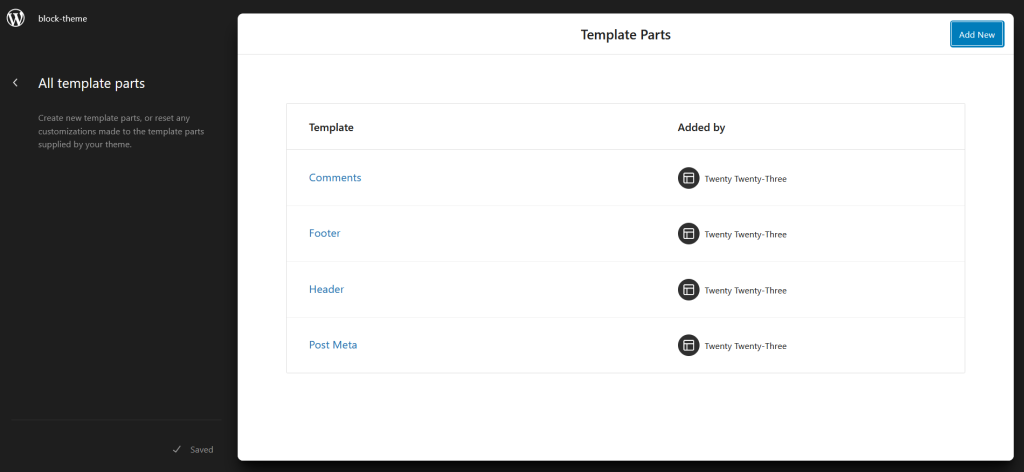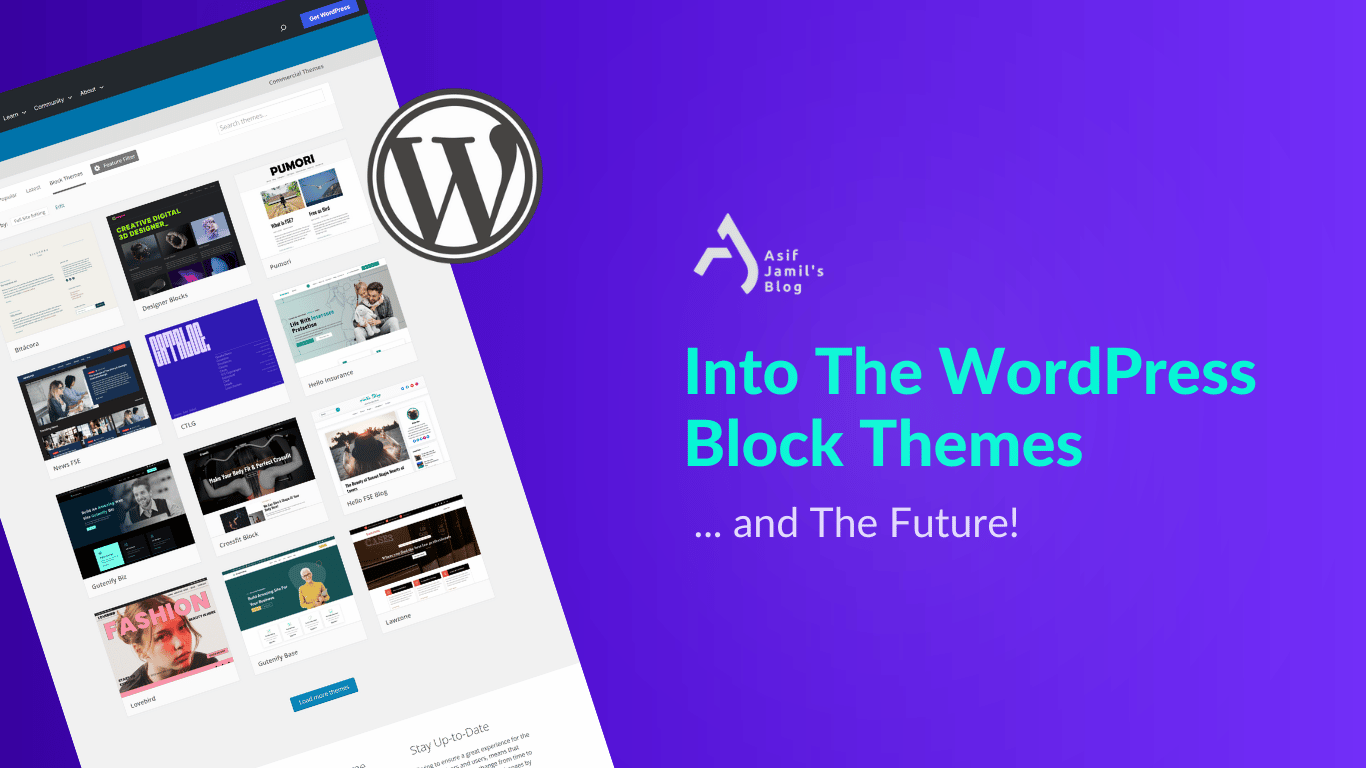In the last few years, WordPress has been gradually shifting from being a simple content management system to becoming an increasingly powerful platform that allows developers to create beautiful designs with ease.
The introduction of Block Themes is the culmination of this shift and is the latest step in the evolution of the WordPress platform.
But what is this block theme? what does this new technology mean for the future of WordPress and web design?
Let’s find out!
What is Block Theme in WordPress?
Block Themes are the newest, most exciting type of theme available for the popular WordPress platform. Those are designed to provide users with an even more powerful, interactive way to create content for their websites.
Rather than relying on traditional page-based themes, Block Themes allow users to create layouts using “blocks” – or chunks of content such as text, images, videos, or audio, that can be arranged to fit their needs.
Block Themes also come with a variety of pre-designed blocks, making it easy for users to kickstart their WordPress sites. Plus, users can easily add new blocks to customize their websites as they grow. From stunning galleries to interactive maps, the possibilities are endless with WordPress Block Themes!
What’s New (and Different) in WordPress Block Themes
1 – Full Site Editing Experience

Block-based WordPress themes are specifically designed to work hand-in-hand with FSE (full site editing). As a result, users can take full advantage of FSE by creating custom block templates for different areas of their website, and then easily apply those templates to individual pages or posts using the block editor.
1.1 – Theme.json
When styling themes, the traditional approach has been to use the style.css and editor-style.css files. But in the block theme architecture, the tasks have been handed over to the theme.json file.
It generates all the CSS styles and variables for you so that modifying the entire website as well as presets and individual blocks become easier. Also, theme.json heavily reduces the CSS code in the style sheets.
1.2 – Global Styles
Global style is the combination of both a system and an interface for editing styles globally for a website. It removes the hassle of styling block by block and saves time by setting a sitewide standard.
One thing to note is that styles added to individual blocks will override that of global styles. So, customization is not really an issue here.
The global style system is accessible to block themes, traditional classic themes, and hybrid themes alike via the theme.json file. However, the interface is exclusive to block themes only, as it’s part of the new site editor.
1.3 – Style Variations
This is definitely a game-changer and replaces the need for multiple WordPress themes for a single site.
Think of alternative variants of style presets within a single theme. With just one click, you can change how your WordPress website looks and behaves upon use.
Yes, that’s exactly what a style variation is!

Leveraging the theme.json configuration, block themes are now capable of storing hundreds of different looks and styles for your website.
2 – Block-based Template Parts
Block themes come with an exciting new feature for WordPress users and theme authors alike. It’s called the template part, and it’s basically —
blocks of content that’s ready to be used again and again throughout the website, just like how templates work.
In general, block template parts are used outside of the content area of a website that’s already editable by the block editor. The most notable uses of these template parts are the header and the footer areas.

In addition, other small parts/blocks that are used sitewide or across categories can also utilize this block-based update. For example sitewide call-to-action sections, modal popups, sticky icons, floating bars, etc.
Here’s a quick look at the template parts editor, which utilizes a resizable canvas for checking breakpoints and device responsiveness of the block:
3 – Less Need for Certain Plugins
Tired of bloated page builders?
Keeping a separate plugin only to build and add header/footers of your WordPress site?
Block themes, powered by FSE and block editor, will eradicate the need for these third-party tools with native features to build your pages, headers, footers, and whatnot!
Admittedly, the block editor is not yet an instant replacement for veteran page builders Elementor or Divi! The block editor is still in its teen days and has a long way to go.
The same is the case for the full site editing feature, if not younger!
Is it a game-changer?
Yes.
Is it ready as the substitute for the theme customizer or renowned plugins that customize certain parts of your website?
Not yet, actually.
But it, along with the whole block theme aspect, is surely the future of how we build and customize WordPress websites! They’ll keep adding extra plugins’ functionalities natively and making our lives better with every release.
WordPress Block Theme vs Classic Theme
Before the introduction of full-site editing and block-based themes, WordPress users had only one option — the classic theme experience. But things have changed now.
Here’s a quick rundown between the classic theme and the block theme:
| Classic Theme | Block Theme |
|---|---|
| A classic WordPress theme adheres to traditional web design practices, utilizing PHP templates and following the conventional WordPress template hierarchy. | A block theme in WordPress represents a cutting-edge approach to web design. It is built using blocks as the fundamental building units for content creation, providing unparalleled flexibility and customization features. |
| It is traditionally used as a pair with the classic editor. The content creation process on this editor is somewhat limiting and minimal in functionalities. | Block themes are optimized for use with the WordPress block editor, also known as Gutenberg editor, which offers a modern and intuitive way to create engaging content. |
| WordPress theme customizer is how people edit and customize classic themes. | Site editor powered by FSE is the way to go with block-based themes. |
Here are some other differences between block themes and classic themes in WordPress:
Modularity and Flexibility
A Block Theme offers more flexibility in terms of layout design and content presentation. Blocks can be easily added, removed, or rearranged to create unique and dynamic page layouts. This allows for greater customization and creativity in designing the appearance of a website.
Classic Themes have limited flexibility in terms of layout design and content presentation. The design and layout are largely predetermined by the template, and customization options are limited to modifying the PHP code. This can make it more challenging to create unique and customized page layouts.
Content Creation
The block editor provides a wide range of block types that can be used to create rich and engaging content, such as image galleries, testimonials, pricing tables, and more. These blocks can be easily customized to suit the needs of the website, without the need for additional plugins or coding.
Content creation in a Classic Theme, however, requires manual coding and formatting using HTML and CSS in general. This can be more complex and time-consuming compared to the block editor in a Block Theme, which provides a more user-friendly interface for content creation.
Learning Curve
If I’m being honest here, and I know I’ll annoy a lot of classic WordPress users, Block themes are way easier to pick up as a fresh user. Especially for non-technical folks like me, block-based themes and editors are a blessing.
Traditional users as well as people in the areas of development prefer the classic themes as they offer more room for customization and building stuff from scratch.
Future-proof Development
Block Themes are considered the future of WordPress, as the block editor is continuously being improved and expanded by the WordPress community. It offers a modern and forward-thinking approach to web design, allowing for more creative and innovative website designs.
It’s not like that classic themes are officially DEAD with the arrival of block themes. Classic themes will continue prevailing in the future as well, for sure. It’s just that the popularity and adoption will gradually decrease with the continual development and improvement of the block-based themes.
That’s why block themes are more future-proof.
Speed and Performance
Generally speaking, block-based themes are faster and more optimal in performance than traditional classic themes. The reason behind that is the less reliance on 3rd party plugins in block themes, along with the cleaner code from FSE compared to those “often found to be bloated” plugins.
Sure, with proper speed optimization and maintenance, any classic theme can produce amazing results. But block themes simply makes it easier to pull off!
The Future of Block Themes in WordPress
It’s time to put my astrologer hat on and try my luck in finding out what the future holds for block-based themes…
1. Wider Range of Adoption
As of now, the adoption rate of block-based themes is relatively low — just as it’s been for the block editor in replacement of the classic editor. While there are numerous reasons (like the learning curve) behind this reluctance, freelance and client-focused custom theme devs are the most against the new concept of block-based development.
Customizing themes using blocks and utilizing full-site editing is a game-changer for non-techies. And that’s what theme devs are fearing. Giving the option to customize sensitive aspects to clients can arise as a recipe for disaster. While there is a solution in the block locking feature, it doesn’t give a 100% guarantee.

In addition, it means less re-work and maintenance for the developers. So, recurring/added services will get hampered.
If the Make WordPress team can come up with something that serves the best interests of both parties, maybe block themes will be more widely used.
Also, awareness campaigns, learning materials, handy tutorial videos, and WordCamp/meetups can help spread the word on how powerful block themes actually are!
2. Starter Content
The official roadmap of WordPress says that starter content is on the horizon for block themes. Starter content has been prevalent in popular legacy/classic themes, so it’s about time that WordPress block themes can also make use of that.
Starter content and templates set the building blocks of a website and help in taking the first step of customizing it. If combined with block themes and FSE, it can surely do wonders for WordPress users.
3. Finer and Richer Directories
We already have a pattern directory for WordPress, where people create and share useful block patterns. But it needs more and more contributions, and also curation to find the aesthetically-pleasing and functionally-effective ones for the users.
Also, perhaps the people behind the scenes can also build a directory for style variations. That’ll make it so easy to find design ideas and inspirations for site owners and developers.
Some are already calling style variation the new miniature version of themes. So, maybe something can be done here.
4. Collaborative Theme Customization?
WordPress has a collaborative multi-author plan for its block editor on the roadmap. So, maybe that’ll open the doors to collaborative theme customization?
If that happens, building large/complex websites will become relatively faster and easier by joining forces. Although, there’s no way of saying if that’ll work or backfire without testing.
5. Implementation of AI?
With the whole wide world shifting towards AI tech, it’s needless to say that WordPress and its themes will also get a taste of that!
Aside from the obvious content, website copies, and visual elements like images from Generative AI models, maybe even blocks can be generated with AI using prompts. Or, maybe the theme code maintenance can also benefit from AI?
Only time will tell, who knows!
In Conclusion…
For today, this may be the end. But this is merely the beginning of a new era of theming and customizing in WordPress!
What are your thoughts on WordPress block themes? Have you tried any, and what were your experiences? Let’s discuss down in the comments.



